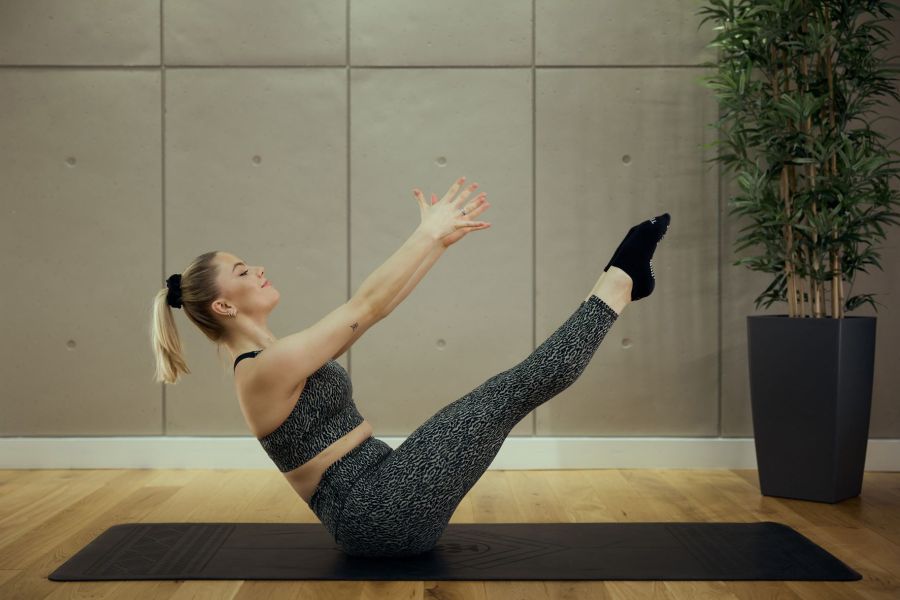Slouching at your home desk again? Poor posture could affect your exercise performance, injury risk and even breathing capacity. Stand tall with this workout from certified Pilates trainer at Ten Health & Fitness, Jessica Hovenden, featuring the best Pilates posture correction exercises…
You’re hunched over the dining room table, cradling your laptop from your half-sitting-half-lying-down position on the sofa, or even using an ironing board as a standing desk… the working from home situation has certainly caused havoc to our posture. And let’s face it, bad posture and back pain were common enough even before we were forced into pandemic-driven lockdowns for over two years.
The problem with poor posture is that, not only can it lead to neck or back pain, it can also negatively impact your exercise performance. It can result in muscle strains and muscular imbalances, which can put you at a greater risk of below-par exercise technique and injury. Poor posture could also affect your breathing, by compressing the chest area so your diaphragm can’t open up fully – which might mean that you feel more fatigued during exercise, especially during high-intensity moves.
But help is at hand! Jessica Hovenden, a certified Pilates trainer at Ten Health & Fitness, has created a series of Pilates posture correction moves and exercises to mobilise your joints and muscles, open your chest and shoulders, and improve your posture for the long term.
How to do these Pilates posture correction exercises:
Hovenden recommends doing this Pilates posture correction routine from start to finish, four to six times, either before a workout or after a day of sitting at your desk. Throughout the workout, ensure you’re breathing fully and deeply through your nose and out through your mouth to gain the most from your stretch and mobility work. Perfect posture, here you come!
7 best Pilates posture correction exercises
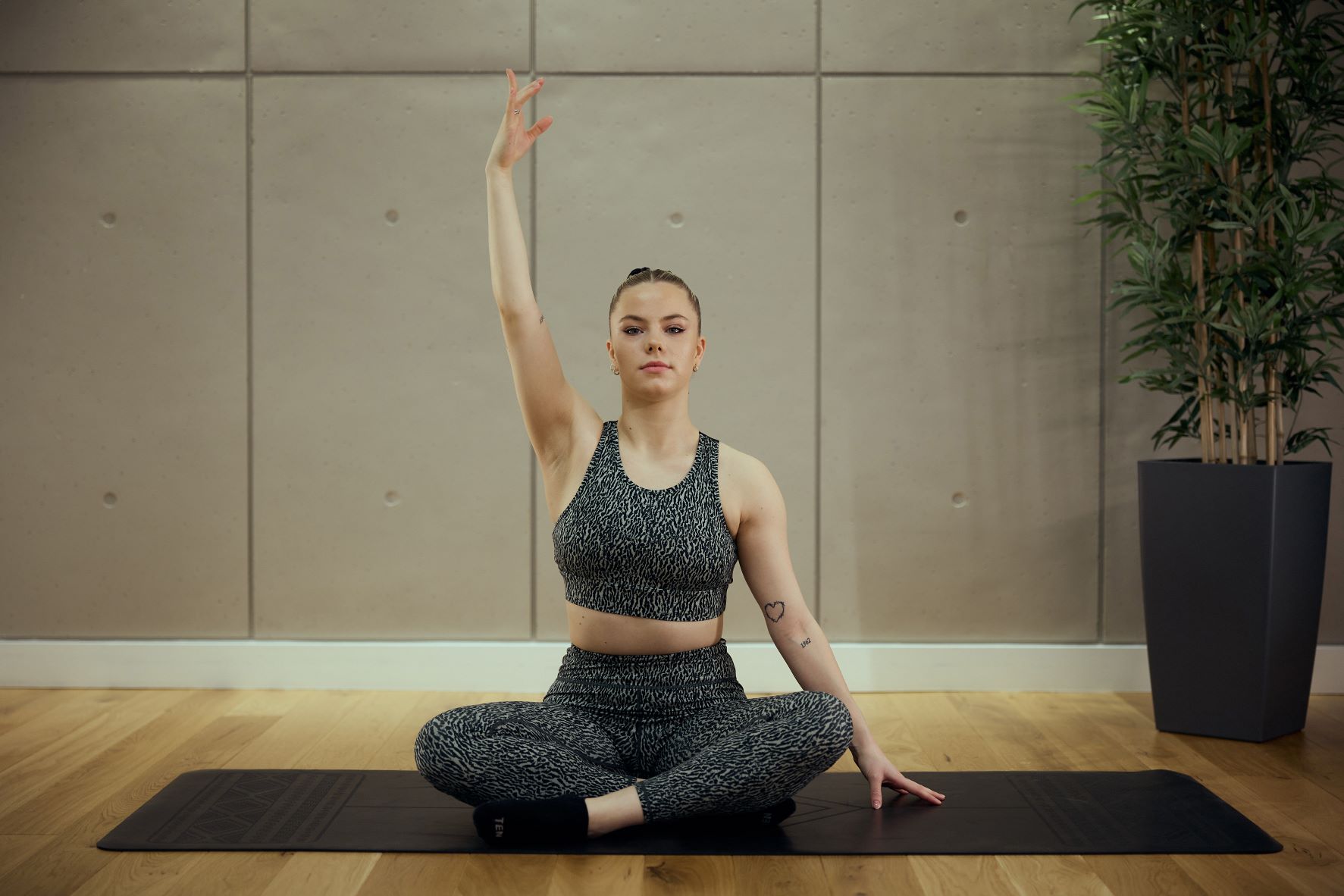
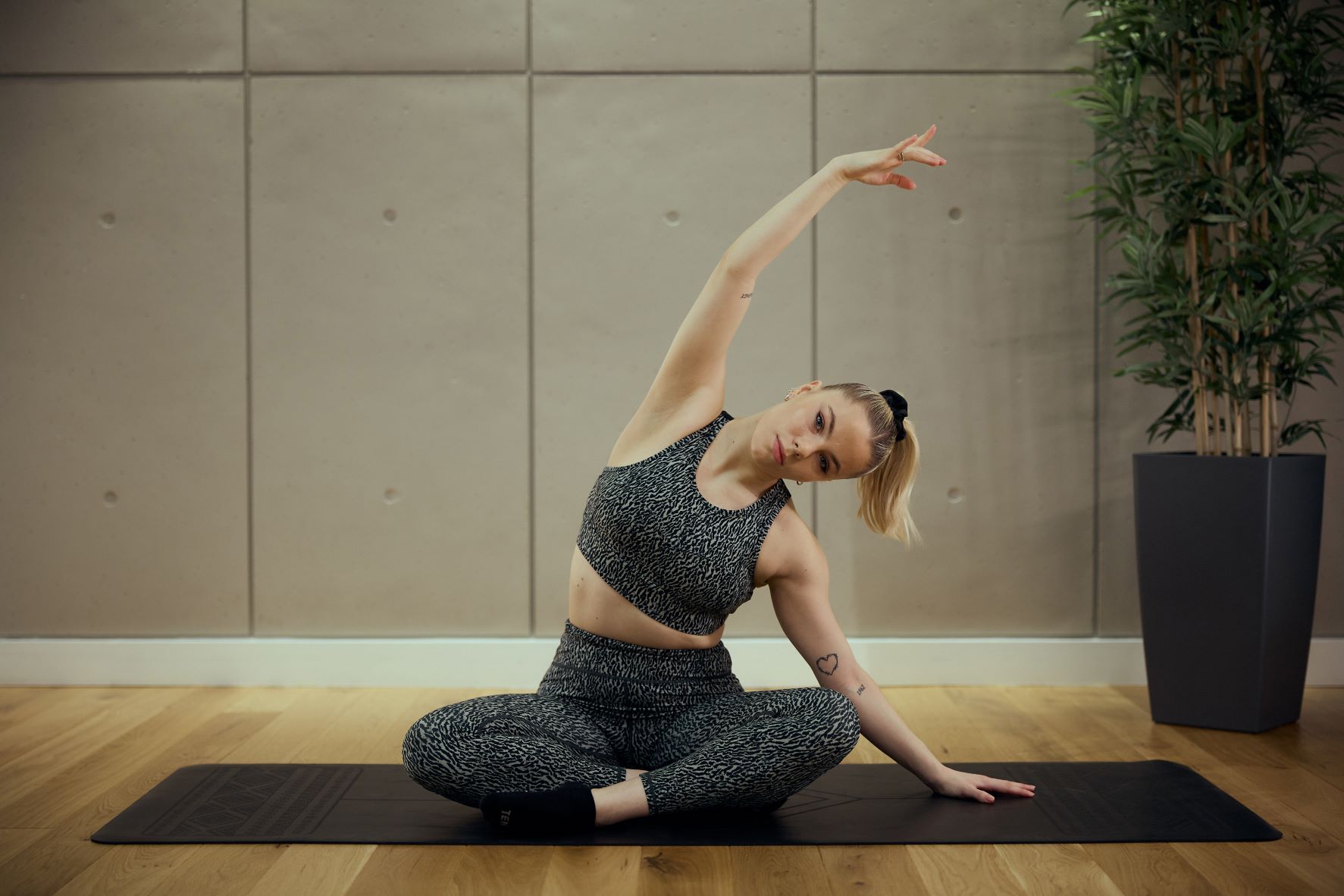
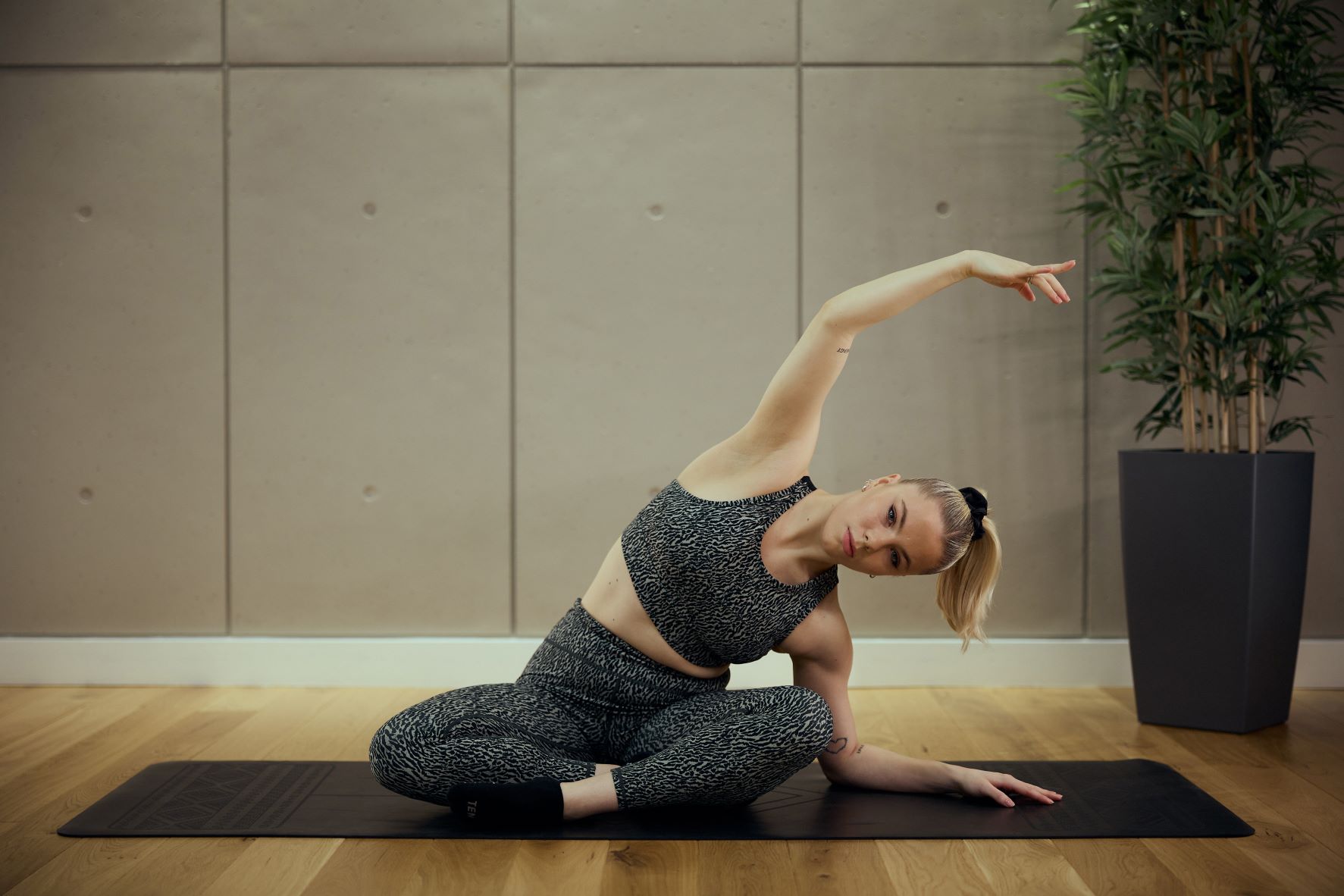
1. Seated side stretch
There is something magical about stretching your side body. Creating space and length for the whole torso has many stress-and tension-relieving benefits. Ensure you reach up and out from the waist before stretching to each side.
- Start by sitting crossed-legged on the floor, pressing both sit bones into the floor.
- Extend your first arm out to the side and up towards the ceiling, elongating your back. Place your other hand onto the floor (A) and take a side stretch over towards the grounded palm (B).
- As you do this, lengthen the side of your body with the arm that’s lifted and send your fingertips towards the side of the room (C).
- Inhale as you slowly comeback to centre, then repeat by stretching to the other side with the other hand.
- Try to keep your sit bones from coming off the floor – remaining grounded ensures you’re getting the best form and posture from your stretch.
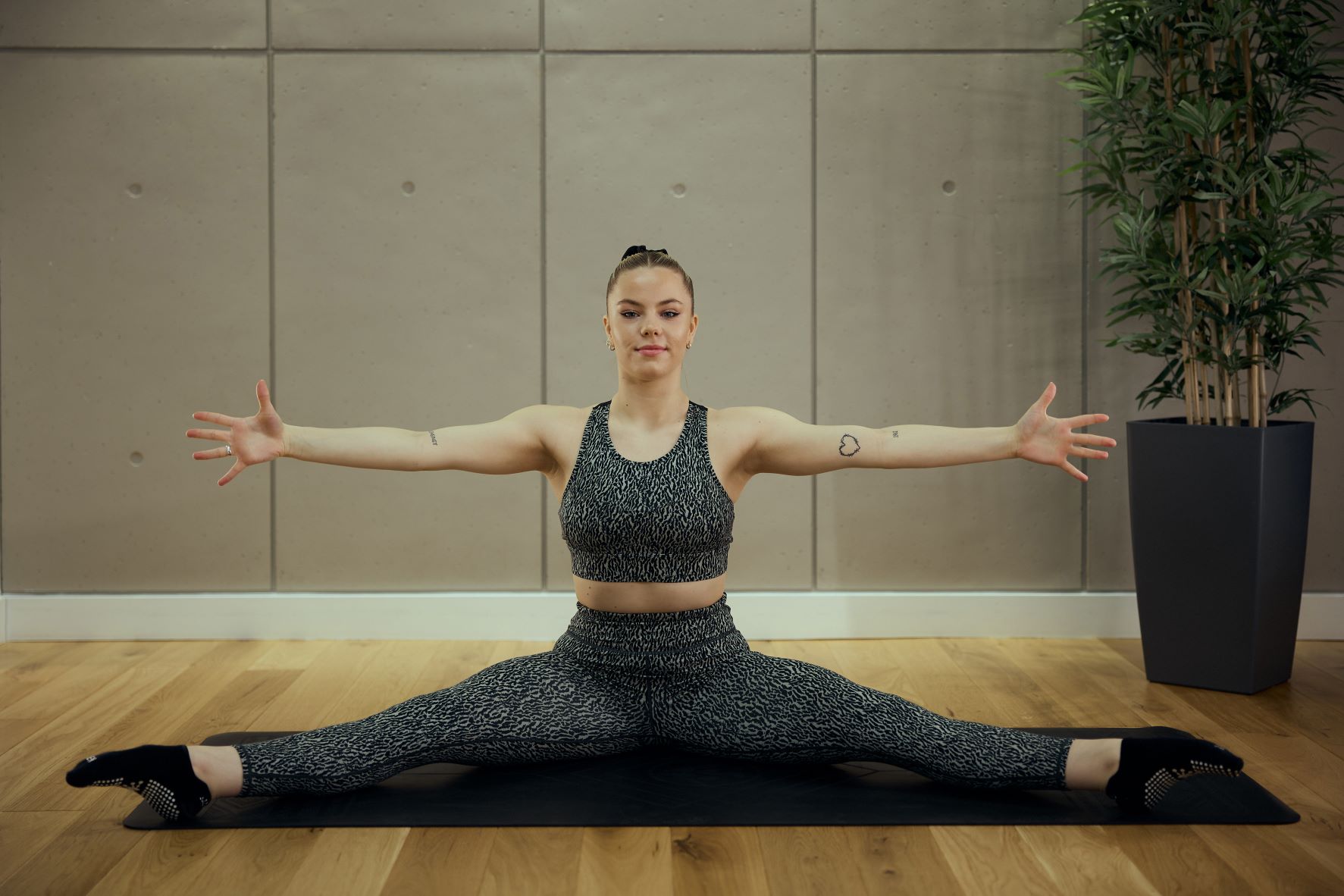
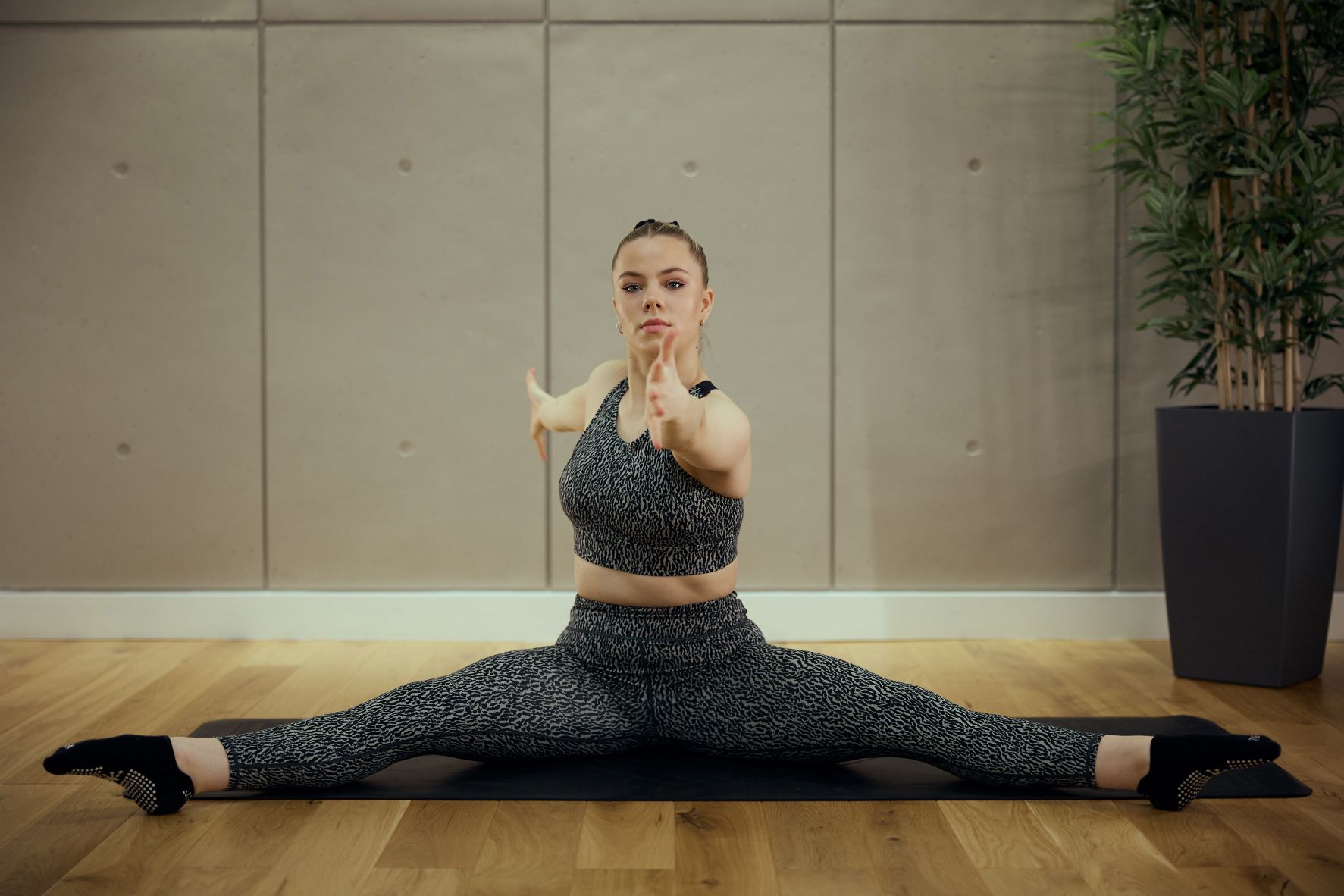
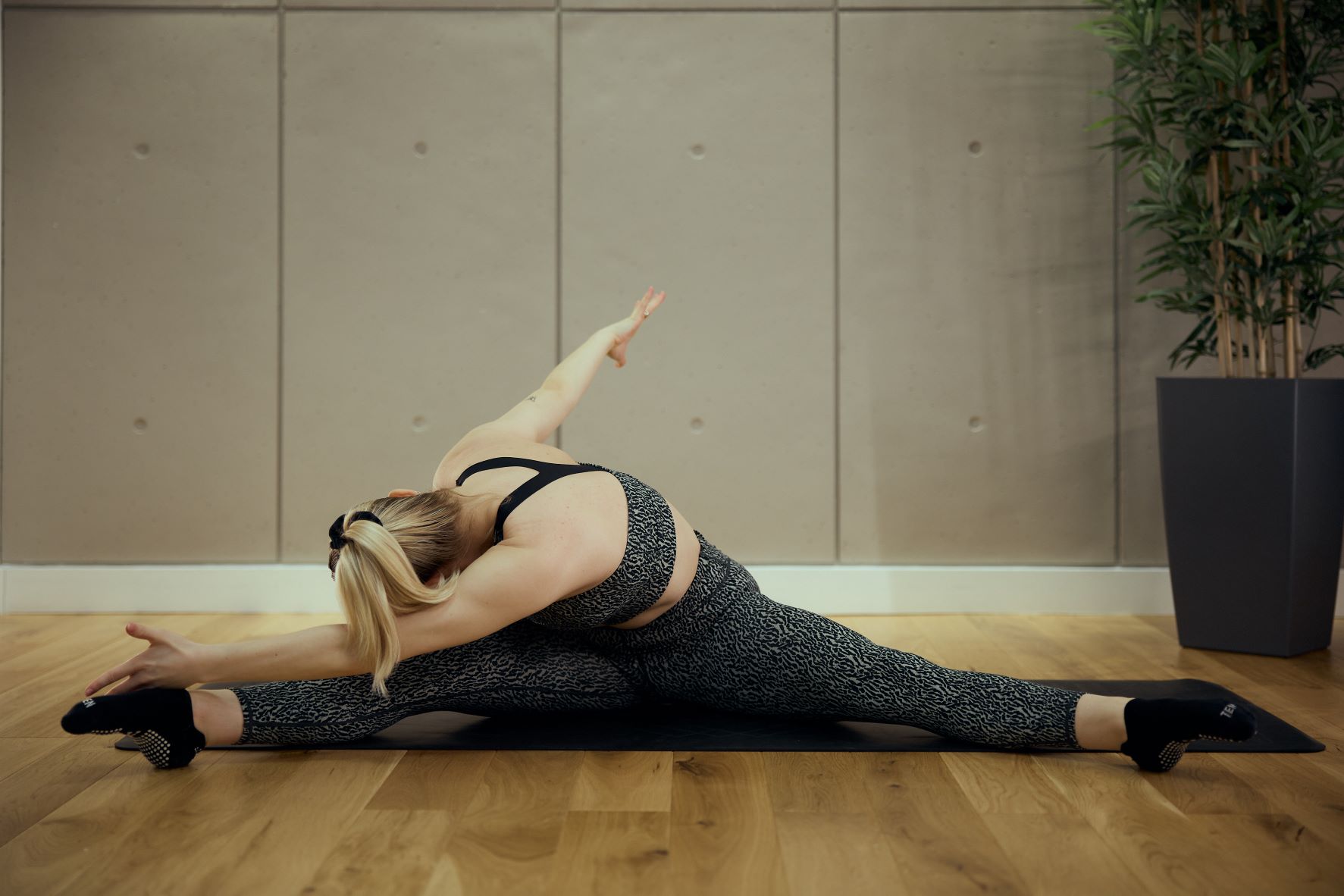
2. Saw
One of the negative impacts of constant sitting or slouching at our desks or while on our phones is that we all suffer from tight hamstrings and weakened groin muscles. The saw is a great Pilates posture correction exercise to increase flexibility in these areas.
- Sit on your mat with your legs fully extended out to the sides. Stretch your arms out to the sides, palms facing forwards (A).
- Whilst inhaling, twist to one side, maintaining your hand position and keeping the spine long and hips square (B). As you exhale, reach towards the toes of your opposite leg.
- Let the stretch take you forward and reach your pinky finger of your front hand across the outside of the opposite foot to touch your little toe (C). Return to the start position and repeat on the other side.
- The modification for this move is to do it with bent knees, ensuring you work your way slowly to a straight-leg position.
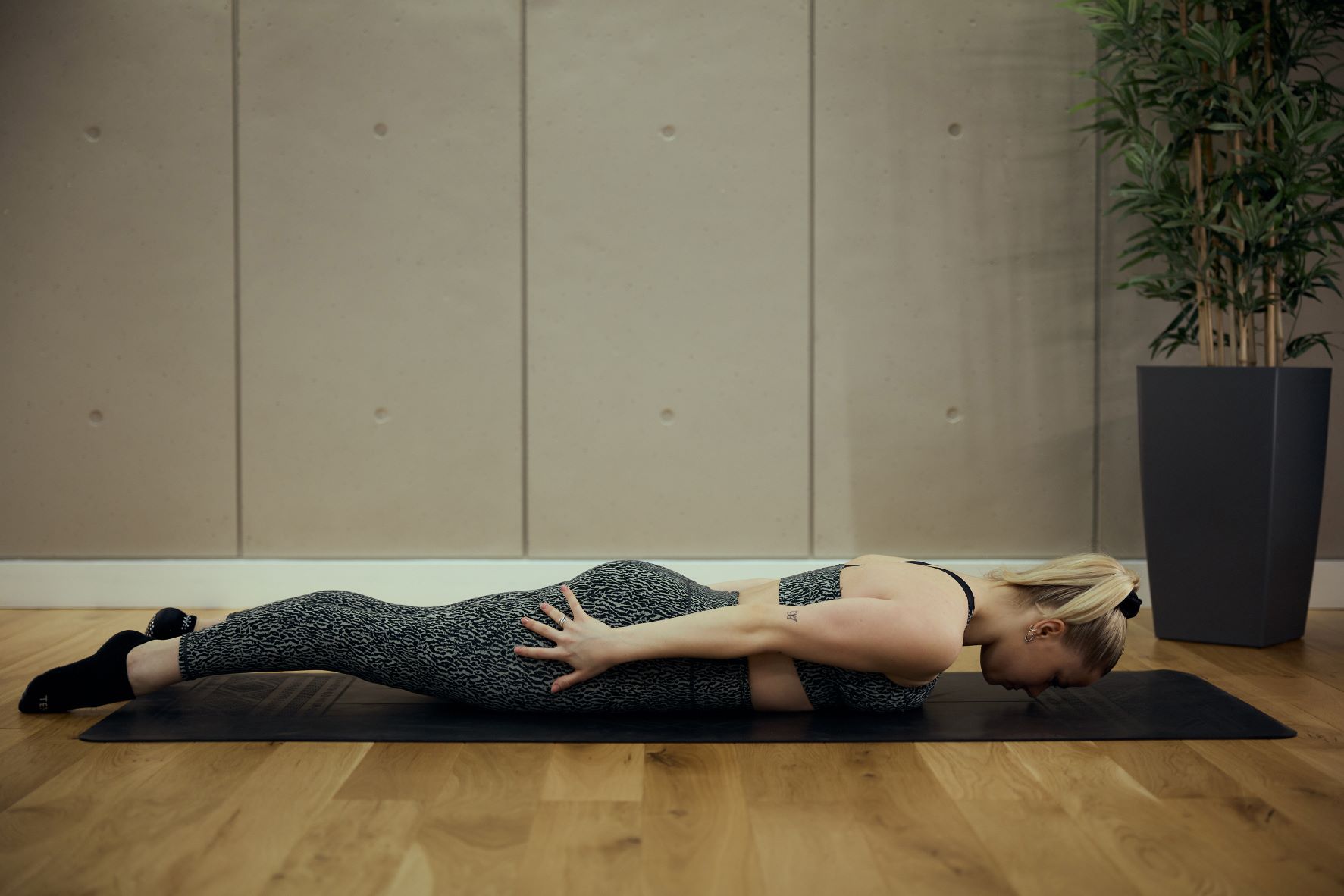
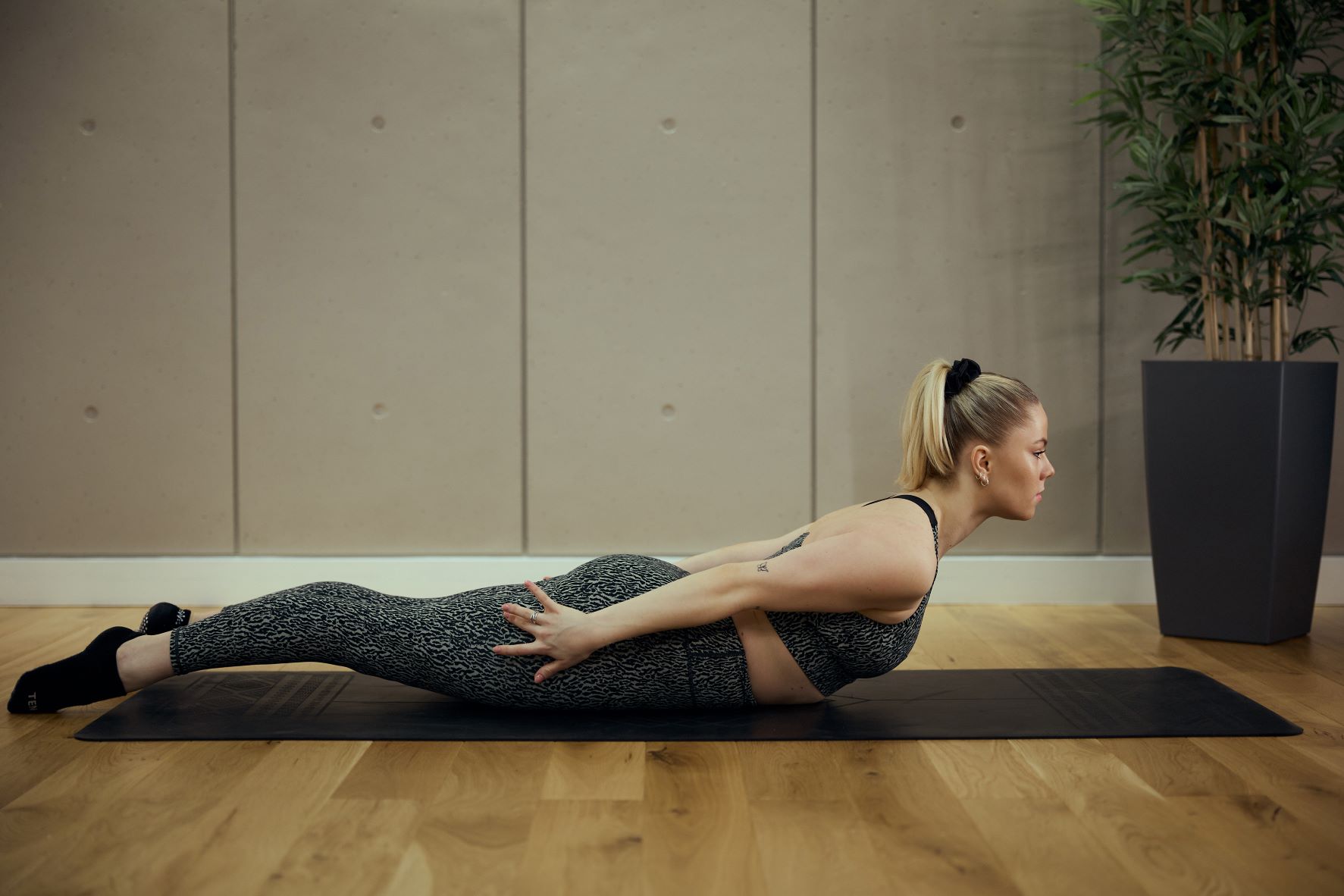
3. Upper back extension
This is a great move for opening your chest. It also strengthens your lumbar spine muscles.
- Lie on your stomach and hold your arms by the sides of your legs. Keep the tops of your feet flat on the floor and ensure you engage your abs and glutes (A).
- Extend your upper back to lift your head and chest, sliding your arms down your legs slowly (B). Pause, then slowly lower back down to the floor.
- Keep your chin tucked in, leading with your breastbone in order to maintain form. Aim to feel a comfortable pressure in the lower back and a slight pressing of your pubic bone into the floor.
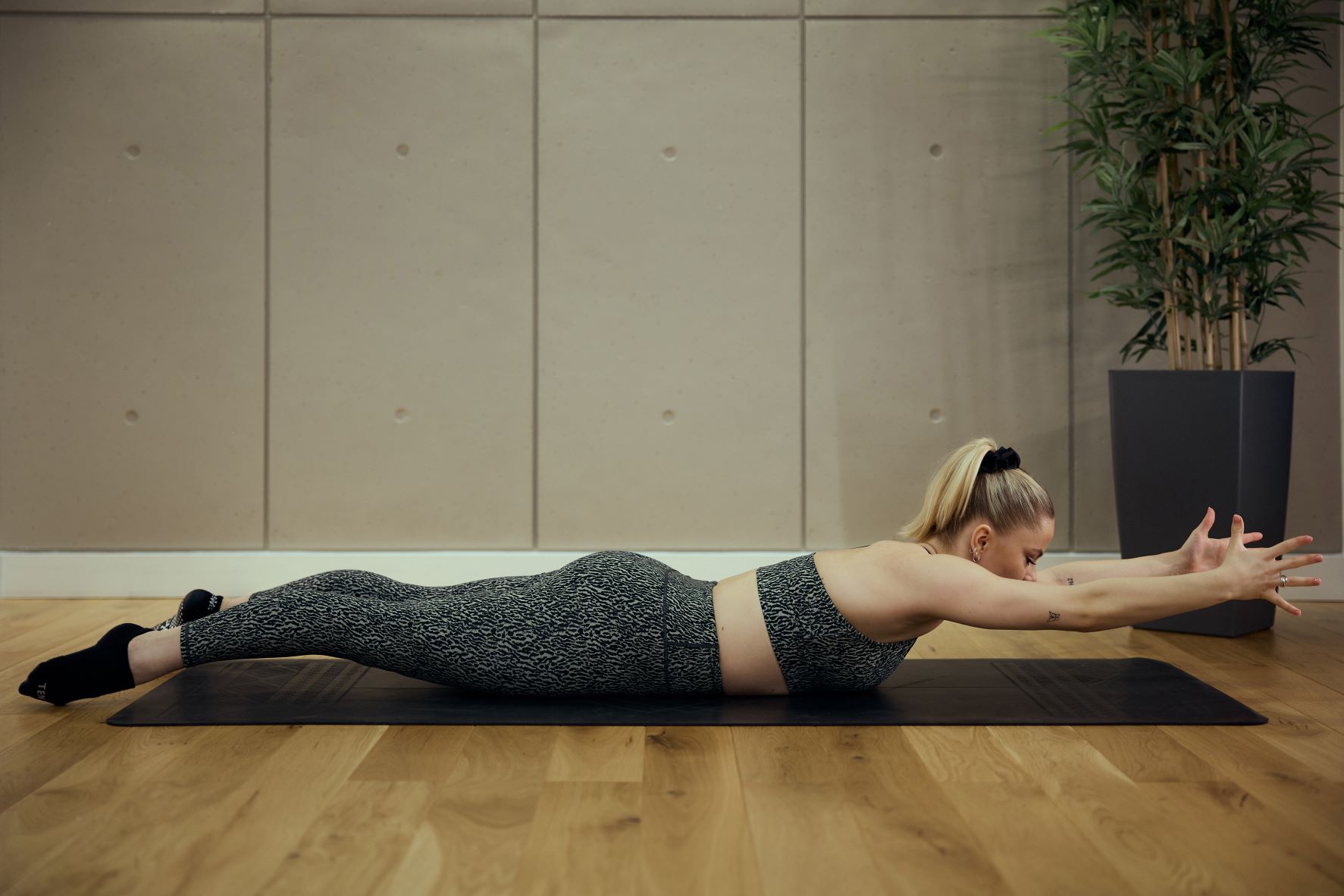
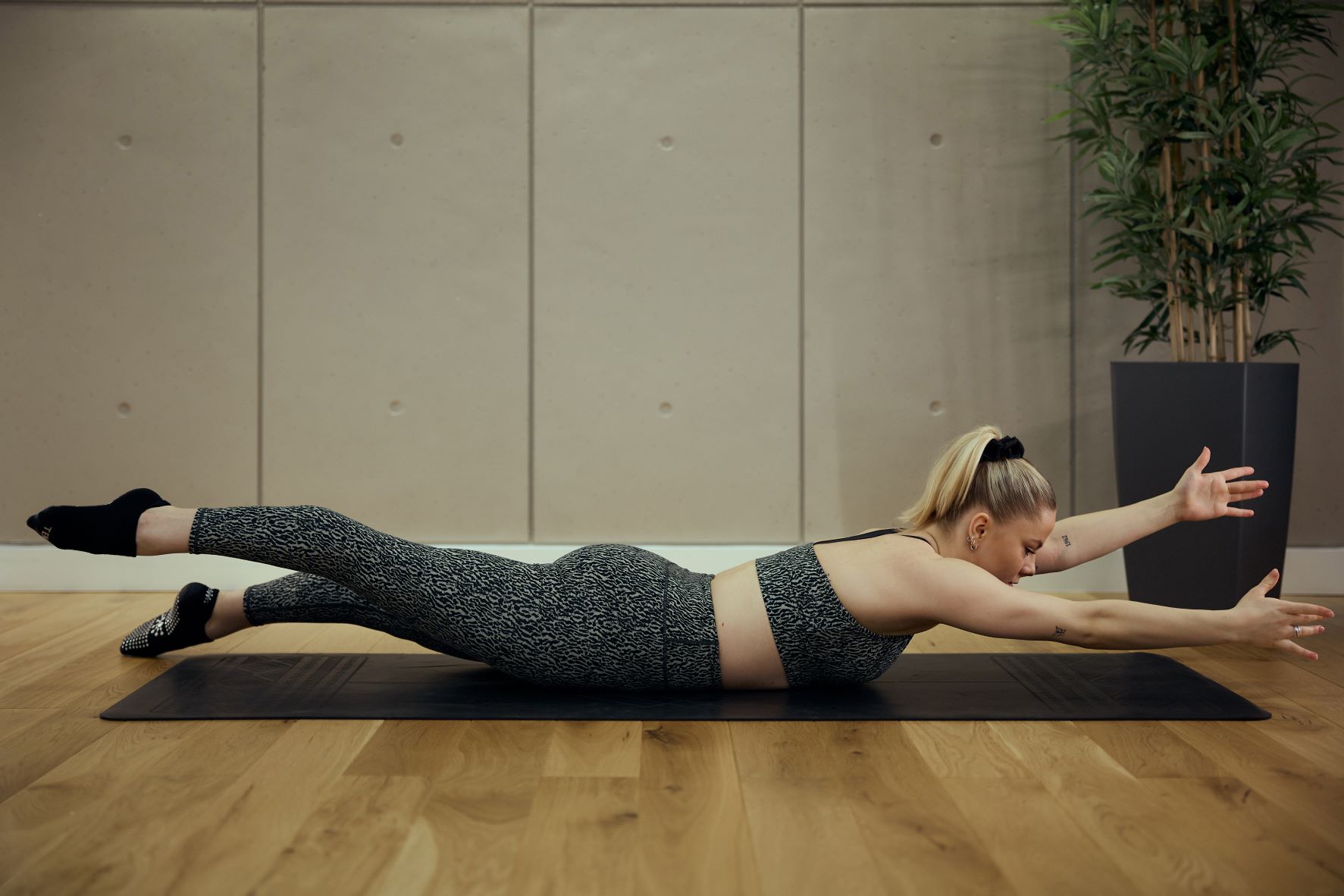
4. Swimming
Now, create a little heat in the body whilst easing some tension and working on creating a long, extensive frame.
- Lie down on your stomach, with both your arms and legs extended. Make sure your chin is tucked in and be careful not to over extend your lower back.
- Keeping your abs engaged, lengthen your arms and legs so they lift off the floor (A). Maintain your spine and head position.
- Lengthen your opposite leg and arm (B), adding a small pulse. Keep reaching from the centre, alternating opposite arms and legs.
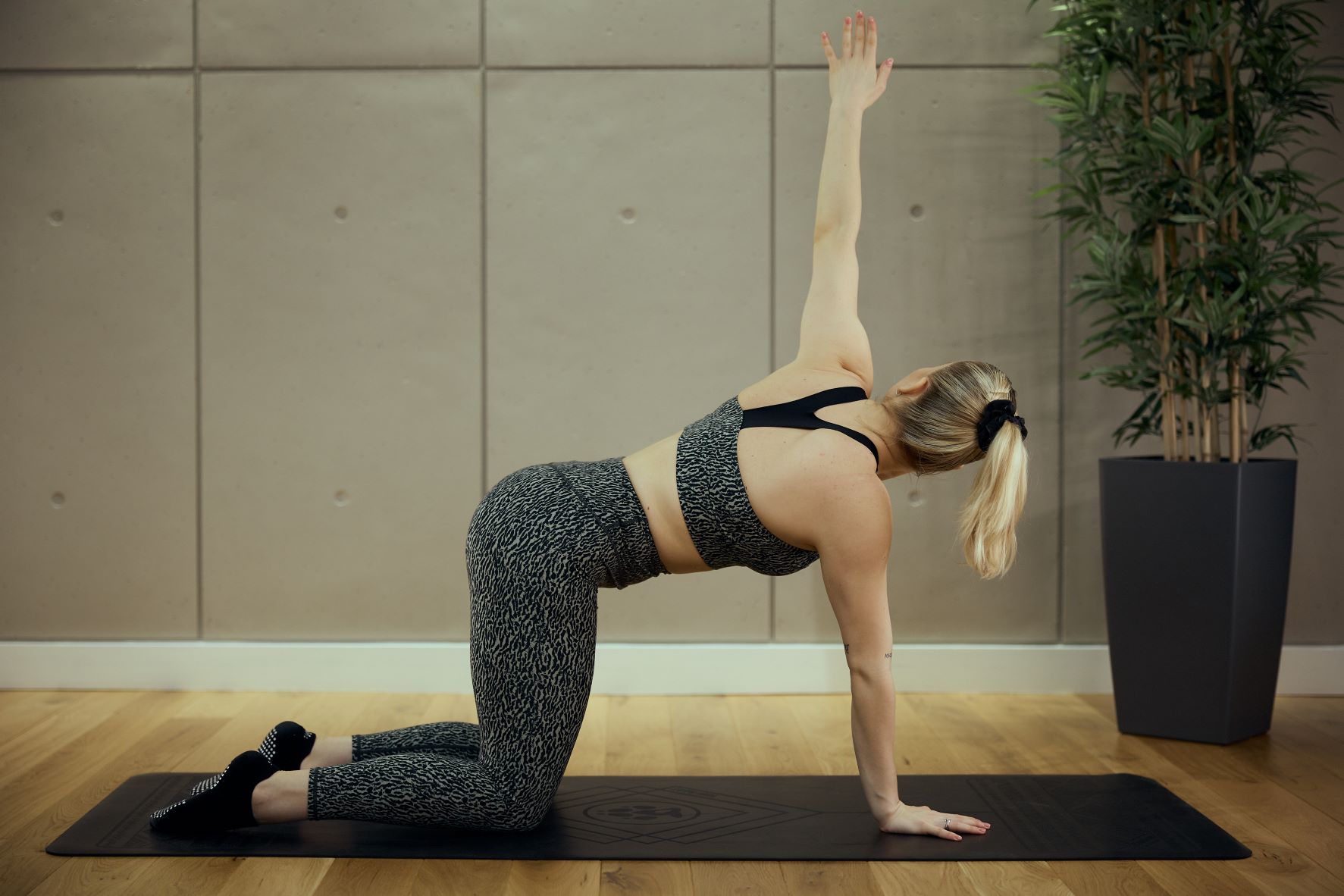
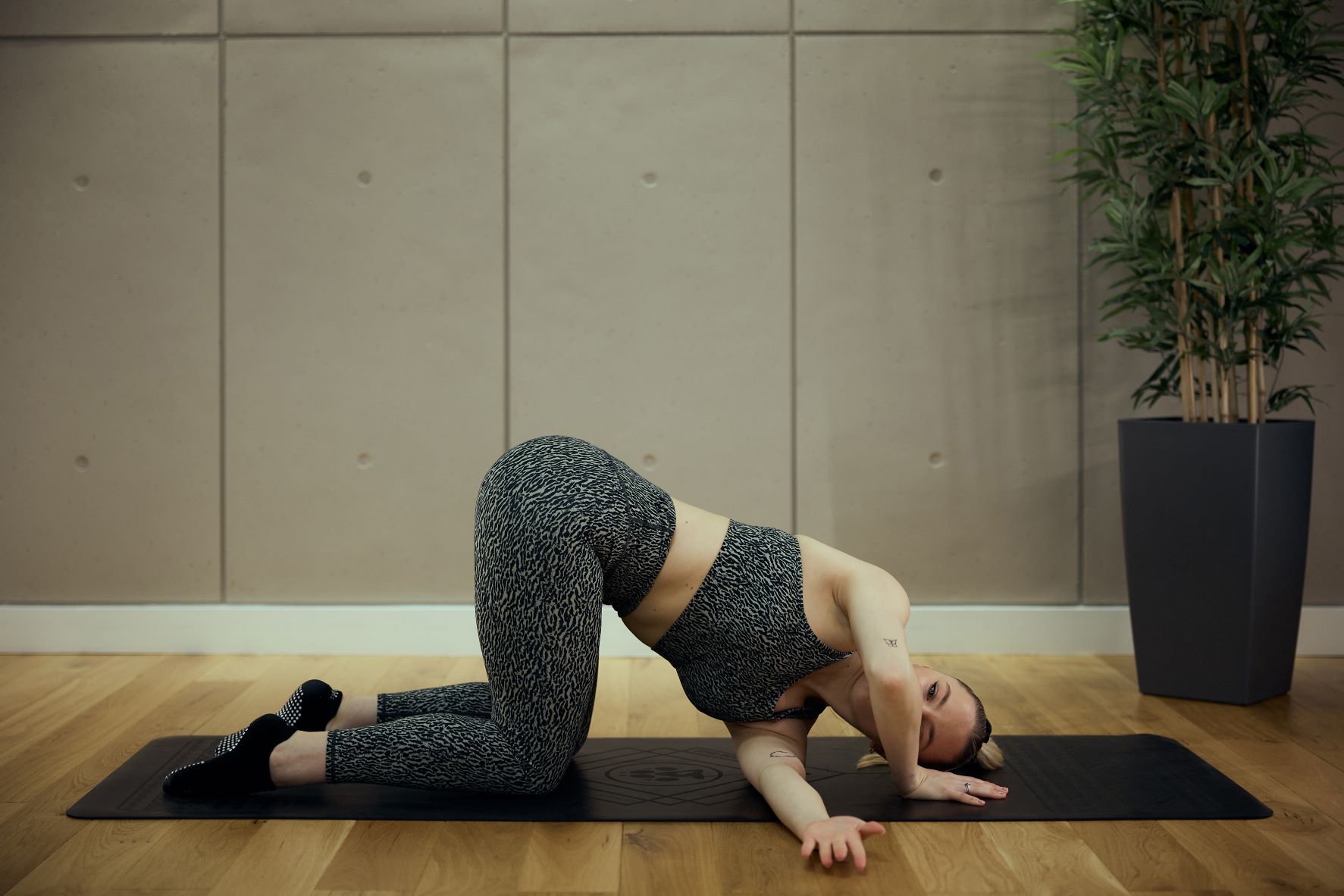
5. Thread the needle
This Pilates posture correction exercise is great for improving thoracic mobility and scapula stability as it targets (and stretches) the rhomboids and mid-to-lower trapezius muscles.
- On all-fours, with hands underneath shoulders and knees under hips, extend one arm towards the ceiling, looking to your palm (A).
- Next, slowly fold and thread that arm under your torso, allowing your shoulder to come to the floor (B).
- Switch sides, then repeat.
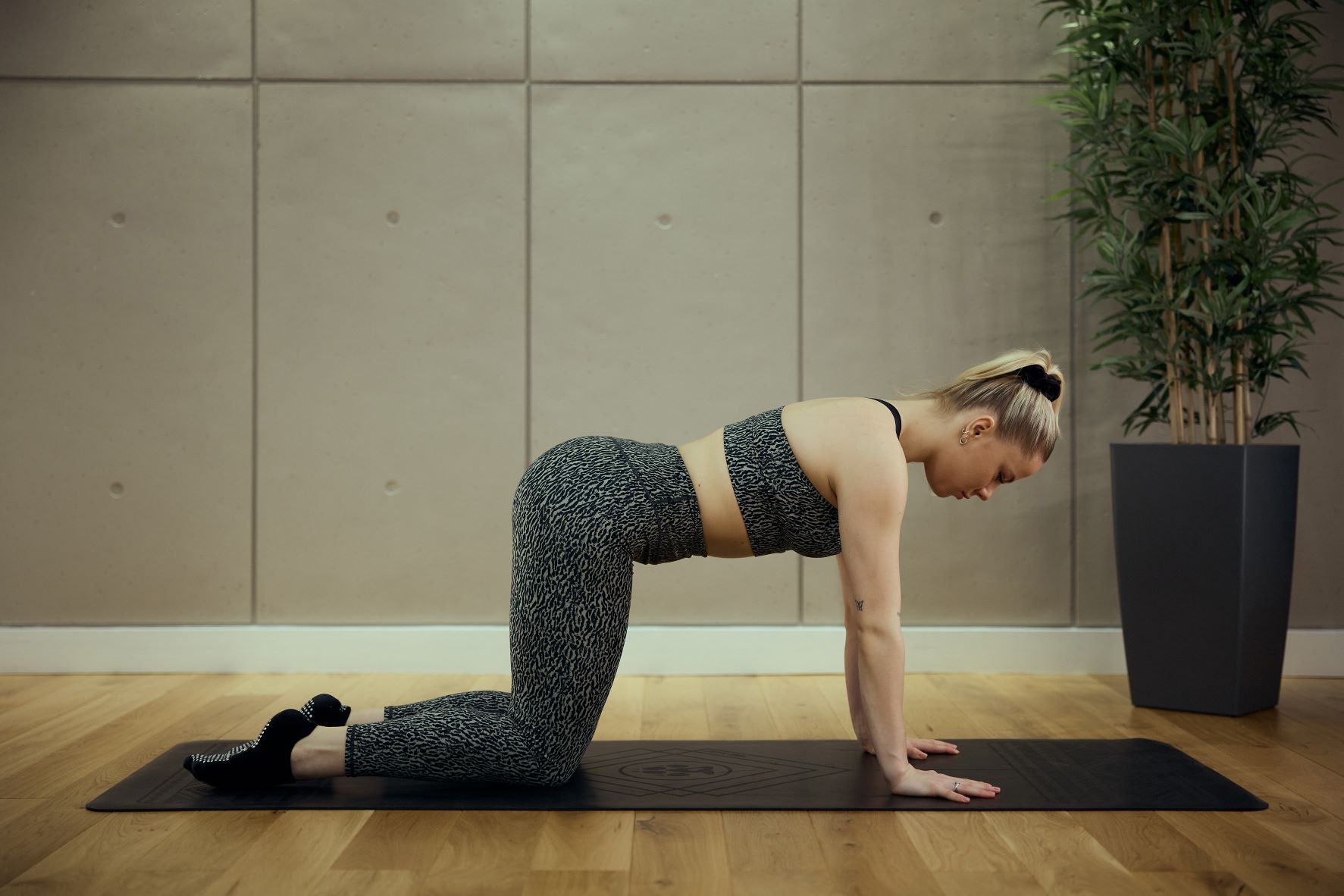
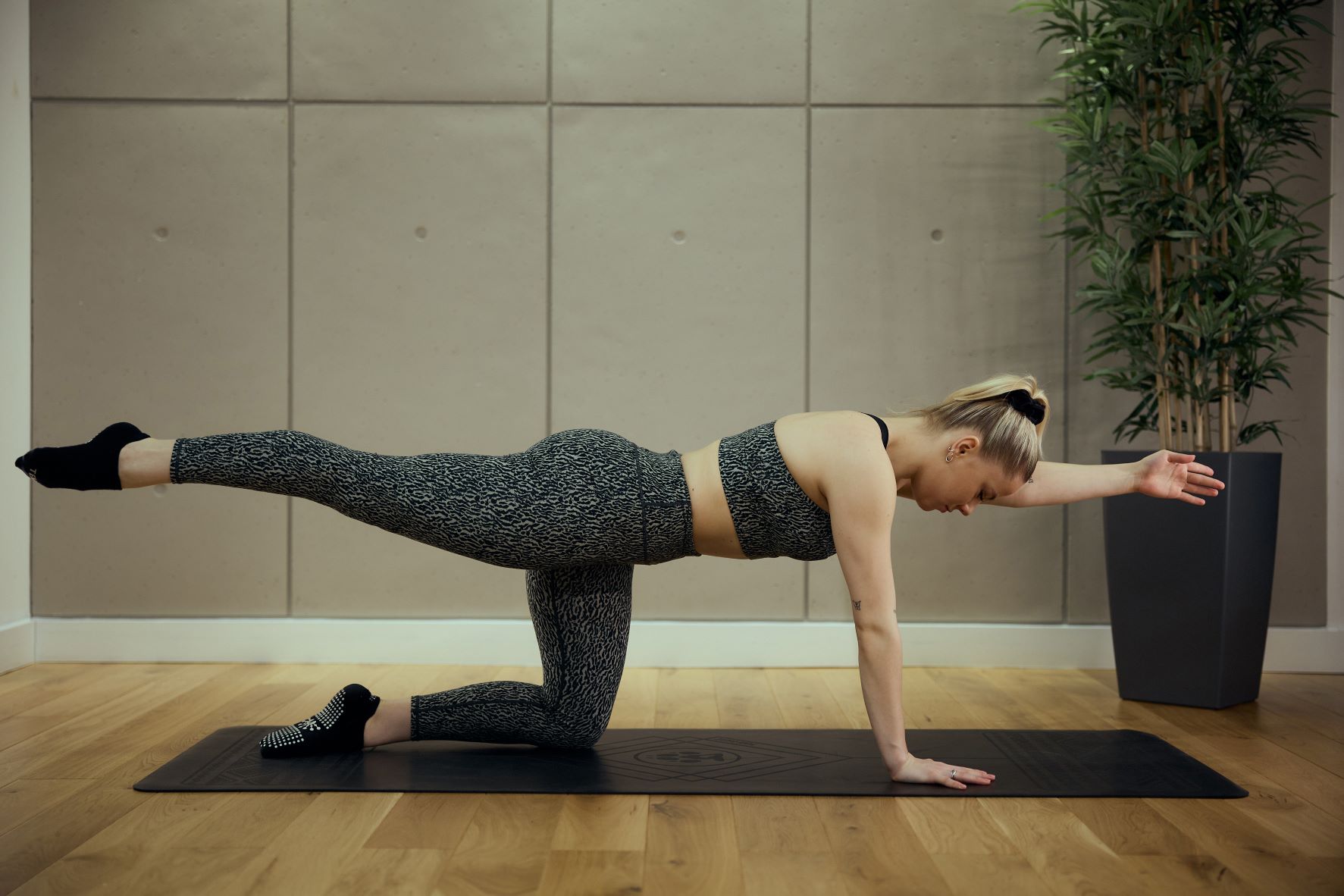
6. 2-point kneeling (quadrupled)
One of the key components to good posture is a strong and stable core. This move activates the core and is great for integrating some deep breathing which, in turn, aids in stress relief.
- Start in your four-point kneeling position, with hands underneath shoulders and knees on the floor.
- Ensure you have a neutral spine position and be careful not to sink into your shoulders (A).
- Tighten your core and reach one arm out in front and the opposite leg behind at the same time (B).
- Hold for three seconds before switching sides and repeating.
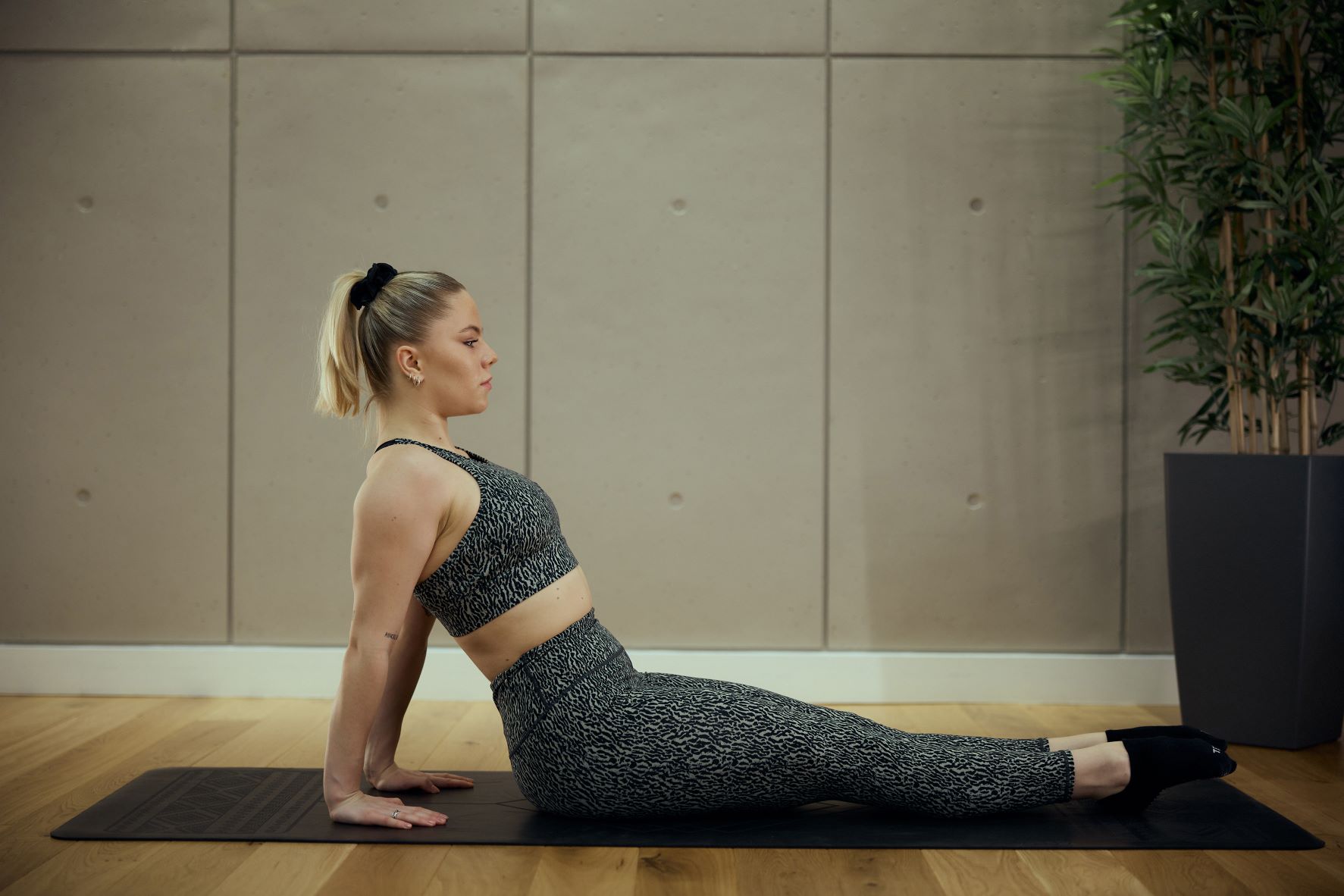
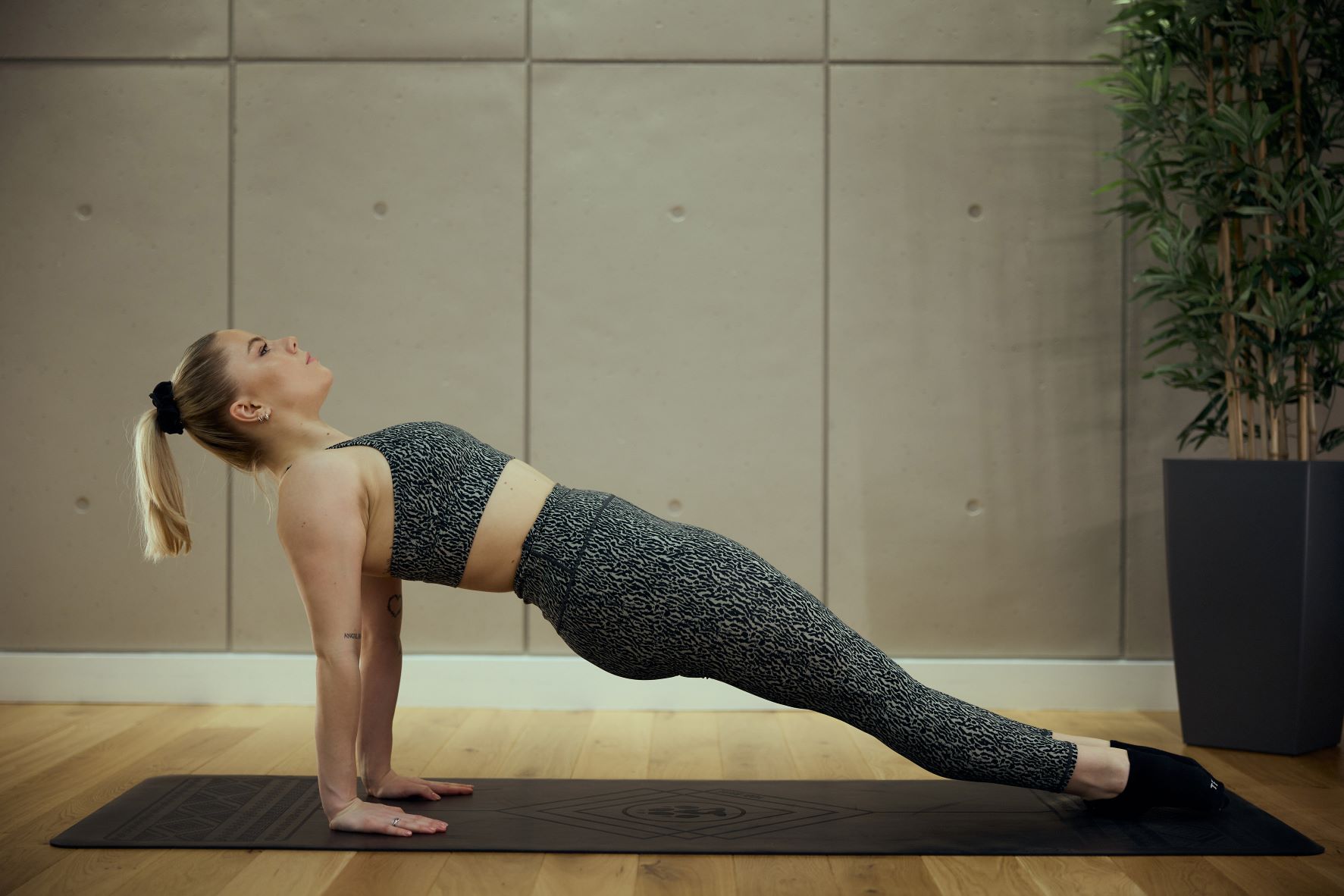
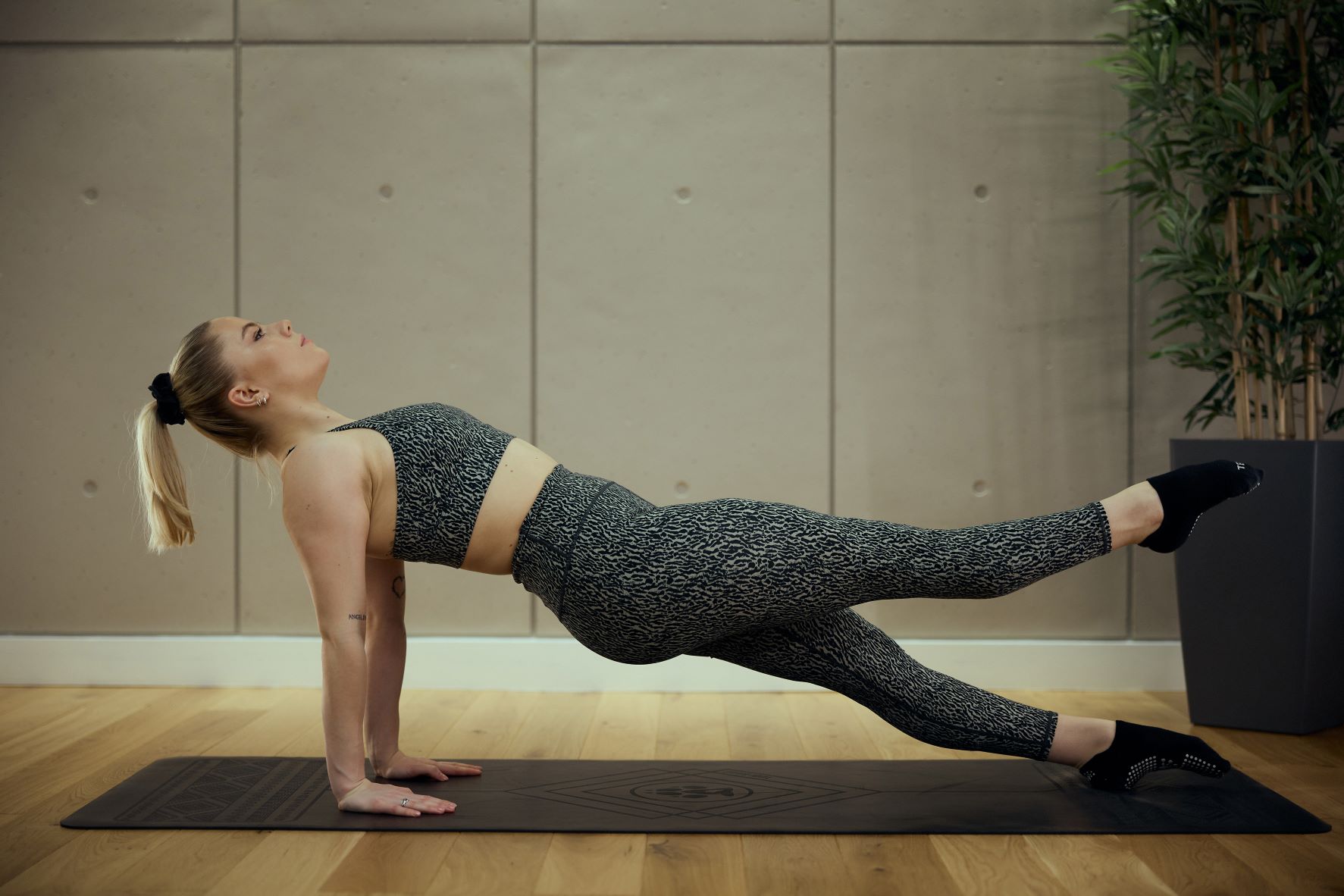
7. Leg pull front
A movement that’s great for lengthening the spine.
- Sit on the floor and extend your legs out in front of you whilst maintaining a neutral spine. Press your palms into the floor a few inches behind your hips, fingers facing your toes (A).
- Lift your tailbone to come into an inverted plank, keeping your torso and legs in a straight line (B).
- Keep your feet pinned together as you lift, making sure you keep your head in line with the rest of your body. Don’t drop your neck, head or sink into your shoulders.
- Raise one leg to hip height (C), lower then repeat on the other side.
- This exercise can feel tough to begin with but, as you gain strength, it becomes second nature.
Jessica Hovenden is a certified Pilates trainer at Ten Health & Fitness. As a lover of being active, Jess found Pilates after years of being a dancer. You can find more of Jess’s workouts at Ten Health & Fitness studios in London, available to access via a Gympass Membership.
Photography: Marcel Grabowski | Model: Jess Hovenden | Clothing: Varley Bassett Bra and Century Legging

